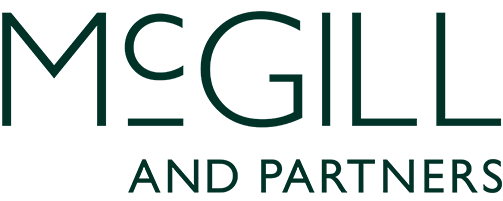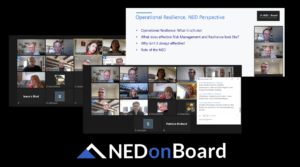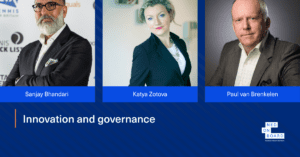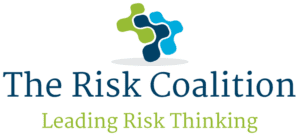Should boards be focusing on “PCR” instead of more fashionable acronyms?
Perhaps there should be more focus on Purpose, Culture and Resilience (“PCR”) as the best building blocks of (and metrics for) strong and responsible corporate performance rather than those offered under more popular acronyms. Some of these are prone to the criticism that being so multi-faceted and broadly based, they are prone to vastly different but equally valid interpretations by companies making meaningful measurement and comparison difficult. PCR by contrast, whilst also capable of many different forms must, in order to be effective, be rooted in the reality of each company’s operations.
Purpose: the first building block
A clearly articulated company purpose which goes beyond maximising profits and shareholder returns and pays due regard to all relevant stakeholders gives a company an identity. When an organisation clarifies its strategy and redefines its value proposition it differentiates itself. A strong purpose can act as a magnet attracting like-minded stakeholders. That in itself is a worthwhile undertaking insofar as it reduces the scope for friction and dissent as the company adapts and pursues its corporate strategy.
Clarity of purpose helps polarise stakeholders to engage or disengage. Purpose should not be confused with the company’s business plan (also of key importance) which is (or should be) concerned with the implementation of strategy. Directors (and in particular new appointees) should seek to validate the extent to which the company’s purpose is understood among its stakeholders.
Culture: the second building block
It is no surprise that in the aftermath of the 2008 financial crisis, regulators have latched onto the importance of culture. For example, the Financial Conduct Authority’s executive director for consumers and competition said in a recent speech: “Culture is at the heart of how we supervise firms. We expect senior leaders to nurture healthy cultures in the firms they lead.” But how should directors set and measure culture and guard against the “do as I say not as I do” pitfall into which some companies fall? Again, validation and the active seeking of feedback from the executive and from all levels within an organisation is part of the task. Do people understand and can they play back the nature of their roles and contributions? Do they feel listened to?
In considering tone from the top, which is a key part of culture, the composition of the board itself is worthy of care and attention. What is the balance of appropriate talents, experience and perspectives required in order best to pursue a company’s purpose? Is there a danger of confusing a representative role on a company’s board with the requirement that each board member be held accountable for the company’s success?
Culture is alignment of purpose with business objectives and needs to be considered within the wider context of the company’s place in the value chain. If a company is excellent at delivering a small part of a solution to climate change or cyber-security how should and does it collaborate with others elsewhere in the value chain to benefit the wider objective?
Resilience: the third building block
The need to take steps to strengthen a company’s future resilience has been recognised as a key focus of management responsibility within the reforms recommended in the Government’s report on Restoring Trust in Audit and Governance published earlier this year. The chosen method of enforcement is “to sharpen personal accountability through new reporting and attestation requirements”. As with purpose and culture, the question as to the areas in which resilience most requires strengthening will vary from company to company. Importantly, the time frame within which resilience needs to be addressed should be carefully considered. Whereas financial resilience (ie going concern) is typically looked at over a relatively short term time horizon of one or two years, viability is considered over three years or more and longer term issues such as the environment for up to ten years and beyond.
There is also a temptation at board level to take the eye off the ball and focus for example on topical issues such as the environment or diversity and inclusion or geopolitical risk at the cost of ensuring that the company can continue to deliver its core products and services to its customers. Ultimately, the aim is to ensure the board feels confident that the commitments made to relevant stakeholders will be delivered.
Related post: Can More Board Regulation Bring Out the Best in the Boardroom?
How can this be made to work in practice?
There are significant personal liability risks for directors who preside over companies which sustain serious financial and/or reputational damage. Moreover, stakeholders including shareholders are increasingly alert to hyperbole. They want authentic progress and reporting and they are becoming more sophisticated and more adept (aided by an active plaintiff’s bar) at holding directors to account. The phenomenon of event-based litigation in which a significant accident or incident sparks a liability suit on the basis that the board should have foreseen and prevented the relevant harm is becoming commonplace. How can boards follow good PCR practice whilst minimising this increased personal liability threat?
Related posts: How to protect yourself effectively against liability risk as a director?
Boards need to feel safe to be brave. They need support from a variety of sources to make good decisions and act wisely. A clear and robust Directors’ and Officers’ liability insurance programme should be one of those sources. Directors should take some responsibility as part of their on-boarding due diligence to inform themselves of the nature and limits of this protection. Resources such as the McGill and Partners presentations embedded into the NED Accelerator® Programme or available within the member area of the NEDonBoard platform are available for this purpose.
This blog is written by McGill & Partners, who have partnered with NEDonBoard to provide educational and insightful content to our community of influential board members.
Not a member yet? To access the learning resources of the platform, including our NED Library (which contains tens of webinars and presentations from subject matter experts and experienced board members), join our organisation as a member.




